- Home
- Christine Feehan
Dark Ghost Page 38
Dark Ghost Read online
Page 38
6. SONG TO HEAL THE EARTH
This is the earth-healing song that is used by the Carpathian women to heal soil filled with various toxins. The women take a position on four sides and call to the universe to draw on the healing energy with love and respect. The soil of the earth is their resting place, the place where they rejuvenate, and they must make it safe not only for themselves but for their unborn children as well as their men and living children. This is a beautiful ritual performed by the women together, raising their voices in harmony and calling on the earth's minerals and healing properties to come forth and help them save their children. They literally dance and sing to heal the earth in a ceremony as old as their species. The dance and notes of the song are adjusted according to the toxins felt through the healer's bare feet. The feet are placed in a certain pattern and the hands gracefully weave a healing spell while the dance is performed. They must be especially careful when the soil is prepared for babies. This is a ceremony of love and healing.
Musically, the ritual is divided into several sections:
First verse: A "call and response" section, where the chant leader sings the "call" solo, and then some or all of the women sing the "response" in the close harmony style typical of the Carpathian musical tradition. The repeated response--Ai Ema Mage--is an invocation of the source of power for the healing ritual: "Oh, Mother Nature."
First chorus: This section is filled with clapping, dancing, ancient horns and other means used to invoke and heighten the energies upon which the ritual is drawing.
Second verse
Second chorus
Closing invocation: In this closing part, two song leaders, in close harmony, take all the energy gathered by the earlier portions of the song/ritual and focus it entirely on the healing purpose.
What you will be listening to are brief tastes of what would typically be a significantly longer ritual, in which the verse and chorus parts are developed and repeated many times, to be closed by a single rendition of the final invocation.
Sarna Pusm O Maget (Song to Heal the Earth) First verse
Ai Ema Mage, Oh, Mother Nature,
Me sivadbin .
We are your beloved daughters.
Me tappadak, me pusmak o maget.
We dance to heal the earth.
Me sarnadak, me pusmak o hanyet.
We sing to heal the earth.
Sielanket jutta tedet it,
We join with you now,
Sivank es akaratank es sielank juttanak.
Our hearts and minds and spirits become one.
Second verse
Ai Ema mage,
Oh, Mother Nature,
Me sivadbin .
We are your beloved daughters.
Me andak arwadet emanked es me o We pay homage to our mother and call upon the
Pohi es Louna, Ida es Laas.
North and South, East and West.
Pide es aldyn es myos .
Above and below and within as well.
Gondank o magenak pusm han ku olen jama.
Our love of the land heals that which is in need.
Juttanak teval it,
We join with you now,
Mage mageval.
Earth to earth.
O pira elidak .
The circle of life is complete.
To hear this chant, visit: https://www.christinefeehan.com/members/.
7. CARPATHIAN CHANTING TECHNIQUE
As with their healing techniques, the actual "chanting technique" of the Carpathians has much in common with the other shamanistic traditions of the Central Asian steppes. The primary mode of chanting was throat chanting using overtones. Modern examples of this manner of singing can still be found in the Mongolian, Tuvan and Tibetan traditions. You can find an audio example of the Gyuto Tibetan Buddhist monks engaged in throat chanting at: https://www.christinefeehan.com/carpathian_chanting/.
As with Tuva, note on the map the geographical proximity of Tibet to Kazakhstan and the Southern Urals.
The beginning part of the Tibetan chant emphasizes synchronizing all the voices around a single tone, aimed at healing a particular "chakra" of the body. This is fairly typical of the Gyuto throat-chanting tradition, but it is not a significant part of the Carpathian tradition. Nonetheless, it serves as an interesting contrast.
The part of the Gyuto chanting example that is most similar to the Carpathian style of chanting is the midsection, where the men are chanting the words together with great force. The purpose here is not to generate a "healing tone" that will affect a particular "chakra," but rather to generate as much power as possible for initiating the "out of body" travel, and for fighting the demonic forces that the healer/traveler must face and overcome.
The songs of the Carpathian women (illustrated by their "Lullaby" and their "Song to Heal the Earth") are part of the same ancient musical and healing tradition as the Lesser and Great Healing Chants of the warrior males. You can hear some of the same instruments in both the male warriors' healing chants and the women's "Song to Heal the Earth." Also, they share the common purpose of generating and directing power. However, the women's songs are distinctively feminine in character. One immediately noticeable difference is that, while the men speak their words in the manner of a chant, the women sing songs with melodies and harmonies, softening the overall performance. A feminine, nurturing quality is especially evident in the "Lullaby."
APPENDIX 2
The Carpathian Language
Like all human languages, the language of the Carpathians contains the richness and nuance that can only come from a long history of use. At best we can only touch on some of the main features of the language in this brief appendix:
The history of the Carpathian language
Carpathian grammar and other characteristics of the language
Examples of the Carpathian language (including The Ritual Words and The Warrior's Chant)
A much-abridged Carpathian dictionary
1. THE HISTORY OF THE CARPATHIAN LANGUAGE
The Carpathian language of today is essentially identical to the Carpathian language of thousands of years ago. A "dead" language like the Latin of two thousand years ago has evolved into a significantly different modern language (Italian) because of countless generations of speakers and great historical fluctuations. In contrast, many of the speakers of Carpathian from thousands of years ago are still alive. Their presence--coupled with the deliberate isolation of the Carpathians from the other major forces of change in the world--has acted (and continues to act) as a stabilizing force that has preserved the integrity of the language over the centuries. Carpathian culture has also acted as a stabilizing force. For instance, the Ritual Words, the various healing chants (see Appendix 1), and other cultural artifacts have been passed down through the centuries with great fidelity.
One small exception should be noted: the splintering of the Carpathians into separate geographic regions has led to some minor dialectization. However the telepathic link among all Carpathians (as well as each Carpathian's regular return to his or her homeland) has ensured that the differences among dialects are relatively superficial (e.g., small numbers of new words, minor differences in pronunciation, etc.), since the deeper, internal language of mind-forms has remained the same because of continuous use across space and time.
The Carpathian language was (and still is) the proto-language for the Uralic (or Finno-Ugrian) family of languages. Today, the Uralic languages are spoken in northern, eastern and central Europe and in Siberia. More than twenty-three million people in the world speak languages that can trace their ancestry to Carpathian. Magyar or Hungarian (about fourteen million speakers), Finnish (about five million speakers) and Estonian (about one million speakers) are the three major contemporary descendents of this proto-language. The only factor that unites the more than twenty languages in the Uralic family is that their ancestry can be traced back to a common proto-language--Carpathian--tha
t split (starting some six thousand years ago) into the various languages in the Uralic family. In the same way, European languages such as English and French belong to the better-known Indo-European family and also evolved from a common proto-language ancestor (a different one from Carpathian).
The following table provides a sense for some of the similarities in the language family.
Note: The Finnic/Carpathian "k" shows up often as Hungarian "h." Similarly, the Finnic/Carpathian "p" often corresponds to the Hungarian "f."
Carpathian
Finnish
Hungarian
(proto-Uralic)
(Suomi)
(Magyar)
ela--live
ela--live
el--live
elid--life
elinika--life
elet--life
pesa--nest
pesa--nest
feszek--nest
kola--die
kuole--die
hal--die
pala--half, side
pielta--tilt, tip to the side
fel, fele--fellow human, friend (half; one side of two) feleseg--wife
and--give
anta, antaa--give
ad--give
koje--husband, man
koira--dog, the male (of animals)
here--drone, testicle
wake--power
vaki--folks, people, men; force
val/-vel--with (instrumental suffix)
vakeva--powerful, strong
vele--with him/her/it
wete--water
vesi--water
viz--water
2. CARPATHIAN GRAMMAR AND OTHER CHARACTERISTICS OF THE LANGUAGE
Idioms. As both an ancient language and a language of an earth people, Carpathian is more inclined toward use of idioms constructed from concrete, "earthy" terms, rather than abstractions. For instance, our modern abstraction "to cherish" is expressed more concretely in Carpathian as "to hold in one's heart"; the "netherworld" is, in Carpathian, "the land of night, fog and ghosts"; etc.
Word order. The order of words in a sentence is determined not by syntactic roles (like subject, verb and object) but rather by pragmatic, discourse-driven factors. Examples: "Tied vagyok." ("Yours am I."); "Sivamet andam." ("My heart I give you.") Agglutination. The Carpathian language is agglutinative; that is, longer words are constructed from smaller components. An agglutinating language uses suffixes or prefixes whose meaning is generally unique, and which are concatenated one after another without overlap. In Carpathian, words typically consist of a stem that is followed by one or more suffixes. For example, "sivambam" derives from the stem "siv" ("heart") followed by "am" ("my," making it "my heart"), followed by "bam" ("in," making it "in my heart"). As you might imagine, agglutination in Carpathian can sometimes produce very long words, or words that are very difficult to pronounce. Vowels often get inserted between suffixes to prevent too many consonants from appearing in a row (which can make the word unpronounceable).
Noun cases. Like all languages, Carpathian has many noun cases; the same noun will be "spelled" differently depending on its role in the sentence. Some of the noun cases include: nominative (when the noun is the subject of the sentence), accusative (when the noun is a direct object of the verb), dative (indirect object), genitive (or possessive), instrumental, final, supressive, inessive, elative, terminative and delative.
We will use the possessive (or genitive) case as an example, to illustrate how all noun cases in Carpathian involve adding standard suffixes to the noun stems. Thus expressing possession in Carpathian--"my lifemate," "your lifemate," "his lifemate," "her lifemate," etc.--involves adding a particular suffix (such as "-am") to the noun stem ("palafertiil"), to produce the possessive ("palafertiilam"--"my lifemate"). Which suffix to use depends upon which person ("my," "your," "his," etc.) and whether the noun ends in a consonant or a vowel. The table below shows the suffixes for singular nouns only (not plural), and also shows the similarity to the suffixes used in contemporary Hungarian. (Hungarian is actually a little more complex, in that it also requires "vowel rhyming": which suffix to use also depends on the last vowel in the noun; hence the multiple choices in the cells below, where Carpathian only has a single choice.)
Carpathian (proto-Uralic)
Contemporary Hungarian
person
noun ends in vowel
noun ends in consonant
noun ends in vowel
noun ends in consonant
1st singular (my)
-m
-am
-m
-om, -em, -om
2nd singular (your)
-d
-ad
-d
-od, -ed, -od
3rd singular (his, her, its)
-ja
-a
-ja/-je
-a, -e
1st plural (our)
-nk
-ank
-nk
-unk, -unk
2nd plural (your)
-tak
-atak
-tok, -tek, -tok
-otok, -etek, -otok
3rd plural (their)
-jak
-ak
-juk, -juk
-uk, -uk
Note: As mentioned earlier, vowels often get inserted between the word and its suffix so as to prevent too many consonants from appearing in a row (which would produce unpronounceable words). For example, in the table on the previous page, all nouns that end in a consonant are followed by suffixes beginning with "a."
Verb conjugation. Like its modern descendents (such as Finnish and
Hungarian), Carpathian has many verb tenses, far too many to describe here. We will just focus on the conjugation of the present tense. Again, we will place contemporary Hungarian side by side with the Carpathian, because of the marked similarity of the two.
As with the possessive case for nouns, the conjugation of verbs is done by adding a suffix onto the verb stem:
Person
Carpathian
(proto-Uralic)
Contemporary
Hungarian
1st (I give)
-am (andam), -ak
-ok, -ek, -ok
2nd singular (you give)
-sz (andsz)
-sz
3rd singular (he/she/it gives)
-- (and)
--
1st plural (we give)
-ak (andak)
-unk, -unk
2nd plural (you give)
-tak (andtak)
-tok, -tek, -tok
3rd plural (they give)
-nak (andnak)
-nak, -nek
As with all languages, there are many "irregular verbs" in Carpathian that don't exactly fit this pattern. But the above table is still a useful guideline for most verbs.
3. EXAMPLES OF THE CARPATHIAN LANGUAGE
Here are some brief examples of conversational Carpathian, used in the Dark books. We include the literal translation in square brackets. It is interestingly different from the most appropriate English translation.
Susu.
I am home.
["home/birthplace." "I am" is understood, as is often the case in Carpathian.]

 Dark Legacy
Dark Legacy Dark Predator
Dark Predator Shadow Keeper
Shadow Keeper The Twilight Before Christmas
The Twilight Before Christmas Oceans of Fire
Oceans of Fire Covert Game
Covert Game Conspiracy Game
Conspiracy Game Dark Lycan
Dark Lycan Magic in the Wind
Magic in the Wind Dark Dream
Dark Dream Turbulent Sea
Turbulent Sea Dark Storm
Dark Storm Dark Ghost
Dark Ghost Shadow Rider
Shadow Rider Dark Secret
Dark Secret Shadow Reaper
Shadow Reaper Bound Together
Bound Together Dark Melody
Dark Melody Wild Rain
Wild Rain Dark Desire
Dark Desire Leopard's Blood
Leopard's Blood Power Game
Power Game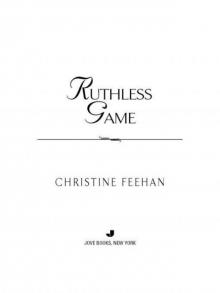 Ruthless Game
Ruthless Game Dark Descent
Dark Descent Spider Game
Spider Game Dark Possession
Dark Possession Cat's Lair
Cat's Lair Dark Slayer
Dark Slayer Dark Peril
Dark Peril Dark Wolf
Dark Wolf Dark Curse
Dark Curse Deadly Game
Deadly Game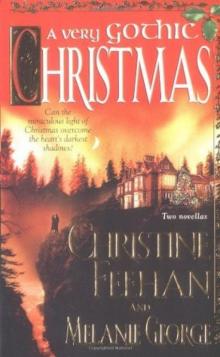 A Very Gothic Christmas
A Very Gothic Christmas Leopard's Prey
Leopard's Prey Wild Fire
Wild Fire Dark Demon
Dark Demon Spirit Bound
Spirit Bound Dark Hunger
Dark Hunger The Shadows of Christmas Past
The Shadows of Christmas Past Dark Fire
Dark Fire Dark Challenge
Dark Challenge Earth Bound
Earth Bound Leopard's Fury
Leopard's Fury Savage Nature
Savage Nature Samurai Game
Samurai Game Wild Cat
Wild Cat Hidden Currents
Hidden Currents Judgment Road
Judgment Road Fire Bound
Fire Bound Water Bound
Water Bound Dark Destiny
Dark Destiny Dark Legend
Dark Legend Safe Harbor
Safe Harbor Shadow Game
Shadow Game Dark Carousel
Dark Carousel Dark Crime
Dark Crime Night Game
Night Game Dark Promises
Dark Promises Dark Magic
Dark Magic Dark Symphony
Dark Symphony Dark Gold
Dark Gold Dark Prince
Dark Prince Dark Guardian
Dark Guardian Dangerous Tides
Dangerous Tides Shadow Flight (The Shadow Series)
Shadow Flight (The Shadow Series)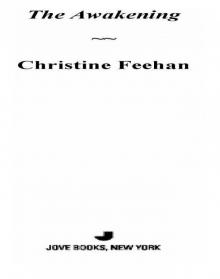 The Awakening
The Awakening The Twilight Before Christmas (stories)
The Twilight Before Christmas (stories) Viper Game
Viper Game Burning Wild
Burning Wild Shadow Flight
Shadow Flight Leopard's Wrath (A Leopard Novel)
Leopard's Wrath (A Leopard Novel) Shadow Warrior (The Shadow Series Book 4)
Shadow Warrior (The Shadow Series Book 4) Lair of the Lion
Lair of the Lion Leopard's Rage
Leopard's Rage Murder Game
Murder Game Air Bound
Air Bound Predatory Game
Predatory Game Lethal Game
Lethal Game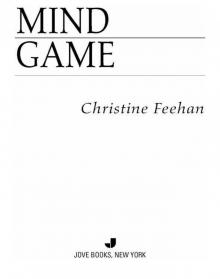 Mind Game
Mind Game Vengeance Road
Vengeance Road The Scarletti Curse
The Scarletti Curse Leopard's Rage (Leopard People)
Leopard's Rage (Leopard People) Dark Song
Dark Song Vendetta Road
Vendetta Road Murder at Sunrise Lake
Murder at Sunrise Lake Reckless Road
Reckless Road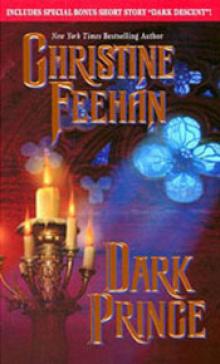 Dark Prince (Dark Series - book 1)
Dark Prince (Dark Series - book 1) Dark Illusion ('Dark' Carpathian Book 33)
Dark Illusion ('Dark' Carpathian Book 33) Dark Desire (Dark Series - book 2)
Dark Desire (Dark Series - book 2) Dark Predator d-22
Dark Predator d-22 Leopard's Run
Leopard's Run Dark Curse 19
Dark Curse 19 Fire Bound (Sea Haven Sisters
Fire Bound (Sea Haven Sisters Dark Sentinel
Dark Sentinel Ruthless Game g-9
Ruthless Game g-9 Dark Slayer 20
Dark Slayer 20 Judgment Road (Torpedo Ink #1)
Judgment Road (Torpedo Ink #1) Rocky Mountain Miracle
Rocky Mountain Miracle GhostWalkers 4 - Conspiracy Game
GhostWalkers 4 - Conspiracy Game Dark Demon 16
Dark Demon 16 Dark Storm ('Dark' Carpathian Series)
Dark Storm ('Dark' Carpathian Series) Dark Symphony (Dark Series - book 10)
Dark Symphony (Dark Series - book 10) Dark Celebration 17
Dark Celebration 17 Dark Descent (Dark Series - Book 11)
Dark Descent (Dark Series - Book 11) Dark Prince (Author's cut special edition)
Dark Prince (Author's cut special edition) Shadowgame
Shadowgame Dark Fire (Dark Series - book 6)
Dark Fire (Dark Series - book 6) Drake Sisters 06 - Turbulent Sea
Drake Sisters 06 - Turbulent Sea Dark Blood (Dark Series Book 26)
Dark Blood (Dark Series Book 26)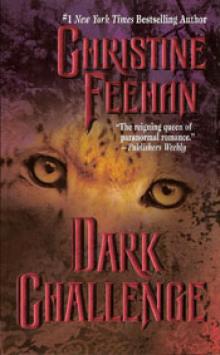 Dark Challenge (Dark Series - book 5)
Dark Challenge (Dark Series - book 5) Dark Blood Deleted Scenes
Dark Blood Deleted Scenes Fantasy
Fantasy Dark 18 - Dark Possession
Dark 18 - Dark Possession L06 Leopard's Prey
L06 Leopard's Prey Dark Sentinel ('Dark' Carpathian Book 32)
Dark Sentinel ('Dark' Carpathian Book 32) Dark Gold (Dark Series - book 3)
Dark Gold (Dark Series - book 3) Dark Guardian (Dark Series - book 9)
Dark Guardian (Dark Series - book 9) The Wicked and the Wondrous
The Wicked and the Wondrous Dark Magic (Dark Series - book 4)
Dark Magic (Dark Series - book 4) Dark Dream (Dark Series - book 7)
Dark Dream (Dark Series - book 7)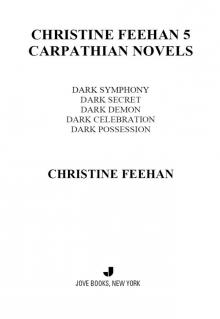 Christine Feehan 5 CARPATHIAN NOVELS
Christine Feehan 5 CARPATHIAN NOVELS GW10 Samurai Game
GW10 Samurai Game Lover Beware
Lover Beware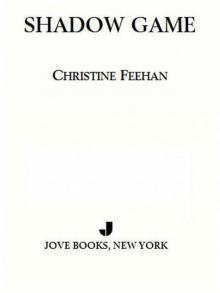 Shadow Game (GhostWalkers)
Shadow Game (GhostWalkers)![[Magic Sisters 05] - Safe Harbor Read online](http://i1.bookreadfree.com/i2/04/12/magic_sisters_05_-_safe_harbor_preview.jpg) [Magic Sisters 05] - Safe Harbor
[Magic Sisters 05] - Safe Harbor Dark 12 - DARK MELODY
Dark 12 - DARK MELODY GhostWalkers 2 - Mind Game
GhostWalkers 2 - Mind Game DarkDescent
DarkDescent Dark Melody (Dark Series - book 12)
Dark Melody (Dark Series - book 12)